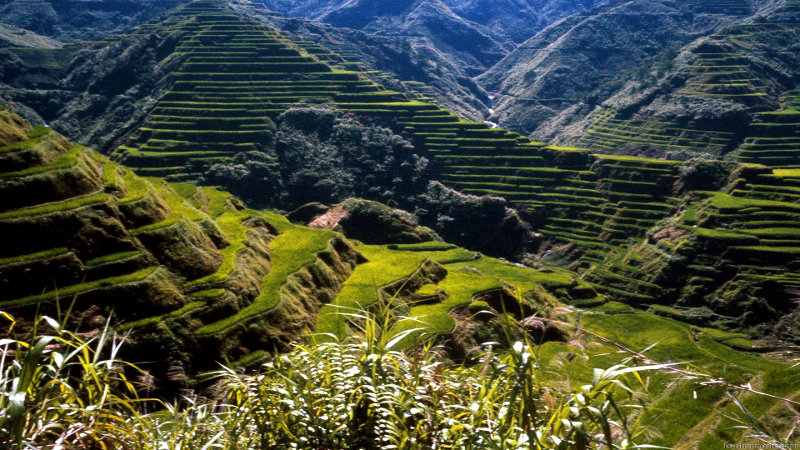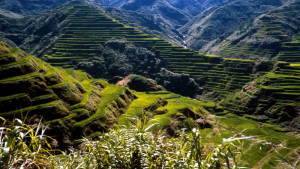
Visit To Sagada and Banaue (Part 1 of 2)
 I cannot now remember when I visited Sagada and the Banaue Rice Terraces. It must have been sometime in the late 1990s or in the early years of 2000. As far as I can remember, I was still using a film camera then, and not a digital one. The idea to visit Sagada and Banaue Rice Terraces came up when I was invited to facilitate a retreat in Baguio City for a group of teachers and employees from my high school alma mater. It must have been in the summer months, since first, I had more days to spend out of the school in Manila where I was assigned, and second, it was not rainy season or else it would not be a good time to spend a few days’ vacation in the mountain province.
I cannot now remember when I visited Sagada and the Banaue Rice Terraces. It must have been sometime in the late 1990s or in the early years of 2000. As far as I can remember, I was still using a film camera then, and not a digital one. The idea to visit Sagada and Banaue Rice Terraces came up when I was invited to facilitate a retreat in Baguio City for a group of teachers and employees from my high school alma mater. It must have been in the summer months, since first, I had more days to spend out of the school in Manila where I was assigned, and second, it was not rainy season or else it would not be a good time to spend a few days’ vacation in the mountain province.
I was then assigned at Colegio de San Juan de Letran in Intramuros, Manila as the head of the Communications Department and the Media Center. I asked my friend, Rizal Pinlac, who was also one of the college faculty members in my department, to help me in facilitating the retreat, to which he agreed. Having completed the three days and two nights of retreat in Baguio City, Rizal and I headed to Sagada the following morning. We took a bus (not air conditioned) and left Baguio City at about 10:00 a.m. The route to Sagada from Baguio City is along the scenic Halsema Highway, which claims to be the highest highway system in the Philippines. We arrived in Sagada at about 5:00 p.m. and the bus stopped in front of the town hall.
One of the main activities in Sagada is spelunking. And as soon as we got off the bus, we inquired right away at the tourist information center on how to go about exploring the caves of Sagada. After being given some information, we saw a couple of foreigners who happened to just come from spelunking in one of the caves. With their guide still holding his lighted Petromax kerosene lamp, as it was about sundown, we asked him if it was still possible to go spelunking at that time and he said yes. And so we went right away to explore one of the main cave attractions of Sagada even before we can even check in at an inn for the night.
Inside the cave, there were parts where water was flowing everywhere. But it was not slippery since no sunlight can penetrate inside to allow algae to grow on the stones. We had to hang on to ropes to get down to the cave. There were parts where we had to wade through breast deep water. The guide lighted our way with his kerosene lamp all throughout our exploration inside the cave. Halfway through our spelunking, he even pointed out to us some sea shells embedded on the cave’s wall. It gives us an idea that Sagada must have been below sea level a long time ago. When we got out of the cave, it was almost 7:00 p.m. We hardly noticed that we were inside the cave for almost two hours!
The following morning, after breakfast, we explored the other attractions of Sagada. With a map on hand, we tried to follow the trail that led to the echo valley, the hanging coffins and the water falls. On the way back to the inn where we were staying, we passed by a weaving shop, where hand woven souvenir items may be bought.


No Comments